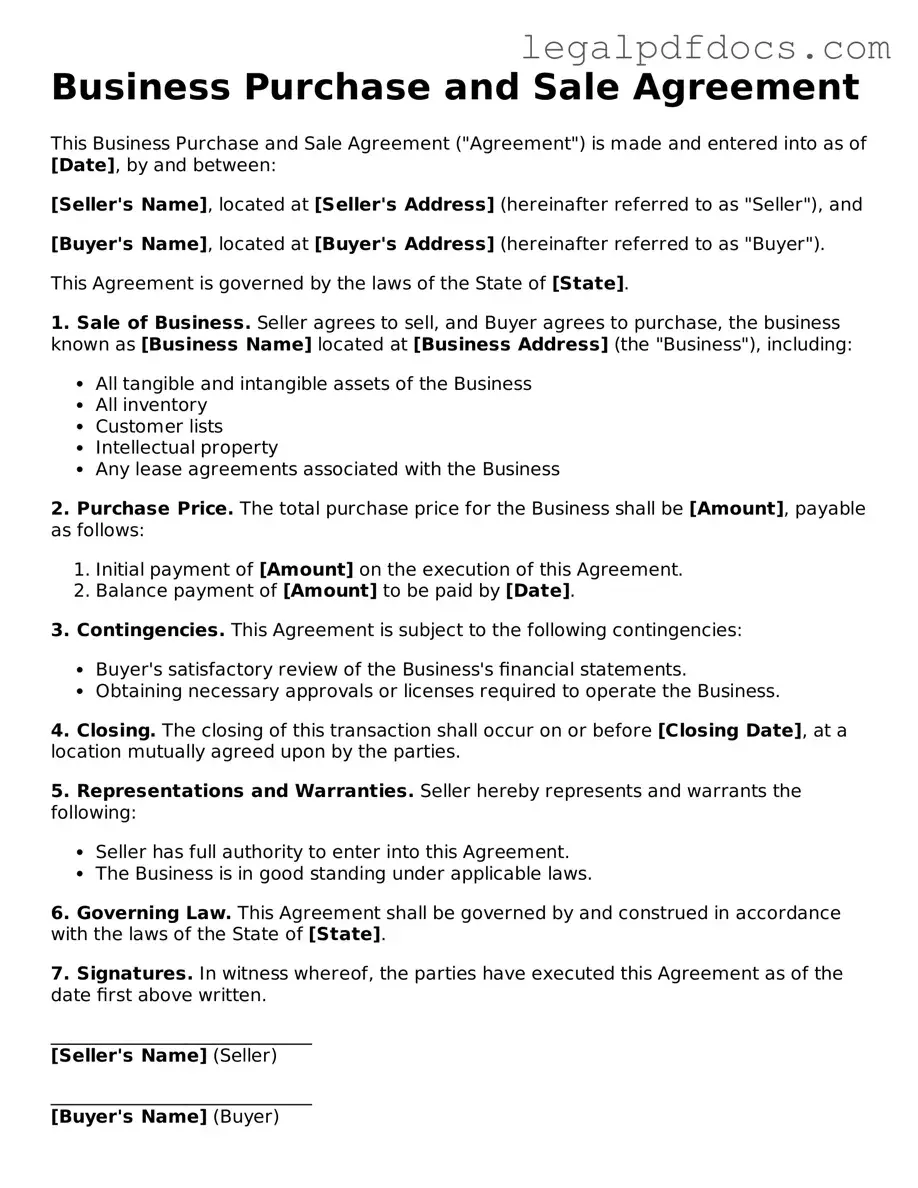Business Purchase and Sale Agreement Template
A Business Purchase and Sale Agreement is a legal document that outlines the terms and conditions under which a business is bought or sold. This agreement serves to protect both the buyer and the seller by clearly defining the responsibilities and expectations of each party. If you’re ready to proceed with a business transaction, fill out the form by clicking the button below.
Open Business Purchase and Sale Agreement Editor Here
